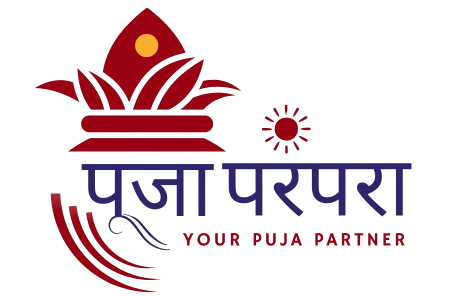Unfolding the Story Behind One of the Most Popular Household Pujas
In countless homes across India, there’s one ritual that’s performed with deep devotion and vibrant celebration — Sathyanarayana Puja. Whether it’s before a wedding, after buying a new home, or simply as a regular spiritual ritual, this puja holds a cherished place in the hearts of devotees. But what exactly is Sathyanarayana Puja? And why is it believed to be so transformative and powerful?
Let’s unravel the divine story and spiritual significance behind this beloved tradition.
What is Sathyanarayana Puja?
Sathyanarayana Puja is a Hindu ritual dedicated to Lord Sathyanarayana, an incarnation of Lord Vishnu, the preserver and sustainer in the Hindu Trinity. “Satya” means truth, and “Narayana” refers to the supreme being — making Lord Sathyanarayana the embodiment of truth and dharma.
This puja is typically performed in the evenings and is known for being simple yet spiritually potent. It can be conducted by anyone — there are no caste or gender restrictions. Unlike many other elaborate rituals, it does not require a temple or a priest. A sincere heart and a sacred intent are enough.
The Origin and Story Behind the Puja
The power of this puja lies in the Sathyanarayana Katha — the story that is read during the ritual. It is believed to have originated from the Skanda Purana, narrated by Sage Suta to a group of rishis.
Here’s a condensed version of the legend:
In ancient times, a poor Brahmin from Kashi (Varanasi) was struggling to make ends meet. One day, Lord Vishnu appeared in his dreams and advised him to perform the Sathyanarayana Vratam. The Brahmin followed the divine instructions, and his life changed overnight — wealth, peace, and happiness followed.
The story further elaborates on how kings, merchants, and commoners who performed the puja with devotion were blessed abundantly. Conversely, those who ignored or disrespected the ritual suffered losses until they atoned and performed the puja with sincerity.
There are five chapters (adhyayas) of stories typically narrated during the puja, each revealing the significance of truth, devotion, and the dangers of arrogance or negligence toward divine grace.
Why is Sathyanarayana Puja So Powerful?
1. It’s Rooted in Satya (Truth)
Lord Sathyanarayana is not just a deity, but a divine reminder to lead a life based on truth, honesty, and dharma. The puja acts as a spiritual cleanser, helping devotees realign their intentions and actions.
2. Brings Prosperity and Stability
People perform this puja seeking blessings for financial stability, peace in family life, removal of obstacles, and success in new ventures. Be it marriage, childbirth, new business, or a housewarming — this ritual marks the start of something auspicious.
3. Highly Accessible
Unlike many Hindu rituals that demand complex procedures, this puja is simple, doable at home, and can even be performed without a priest. That makes it one of the most practiced rituals in Indian households globally.
4. Boosts Spiritual Discipline
It’s more than a one-time ritual — devotees often observe the Sathyanarayana Vratam every month on Purnima (Full Moon Day). This regular observance cultivates devotion, discipline, and mindfulness.
5. Connects the Family Spiritually
The puja is usually performed with the participation of the entire family. From preparing prasad to reciting the katha together, it strengthens emotional and spiritual bonds, especially across generations.
Offerings (Naivedyam) in the Puja
A unique part of this puja is the offering of ‘Sapatha’ — a sweet dish made from rava (semolina), ghee, banana, sugar, and milk. Other offerings include fruits, coconut, betel leaves, and flowers.
This naivedyam, after being offered to the deity, is distributed as prasadam — considered blessed and sacred.
The Ritual Flow
A typical Sathyanarayana Puja includes:
- Ganapati Puja – to remove obstacles
- Kalasha Sthapana – invoking divine presence in the Kalasha
- Sankalpa – taking a vow for the puja
- Panchamrita Abhishekam – symbolic bathing of the deity
- Katha Shravanam – narration of the sacred story
- Aarti and Prasad Distribution
When Should You Perform It?
While it can be done on any day, Full Moon (Purnima) and Ekadashi are considered especially auspicious. It’s also commonly done during:
- Housewarming (Griha Pravesh)
- Naming ceremonies
- Weddings
- Start of new jobs or businesses
- After overcoming a major hurdle in life
athyanarayana Puja is not just a ritual — it’s a spiritual celebration of truth, gratitude, and new beginnings. The power of this puja doesn’t lie in its complexity but in the devotion with which it’s performed. As the stories show us, when done with sincerity, this ritual brings about divine blessings, healing, and harmony.
So, whether you’re navigating a new chapter in life or simply wish to invite positivity and grace into your home — the Sathyanarayana Puja is a deeply rewarding spiritual experience.
May Lord Sathyanarayana bless you with truth, prosperity, and peace.
🔔 Have you experienced the magic of Sathyanarayana Puja in your life? Share your story in the comments or reach out to us if you’d like help organizing a puja at home.
